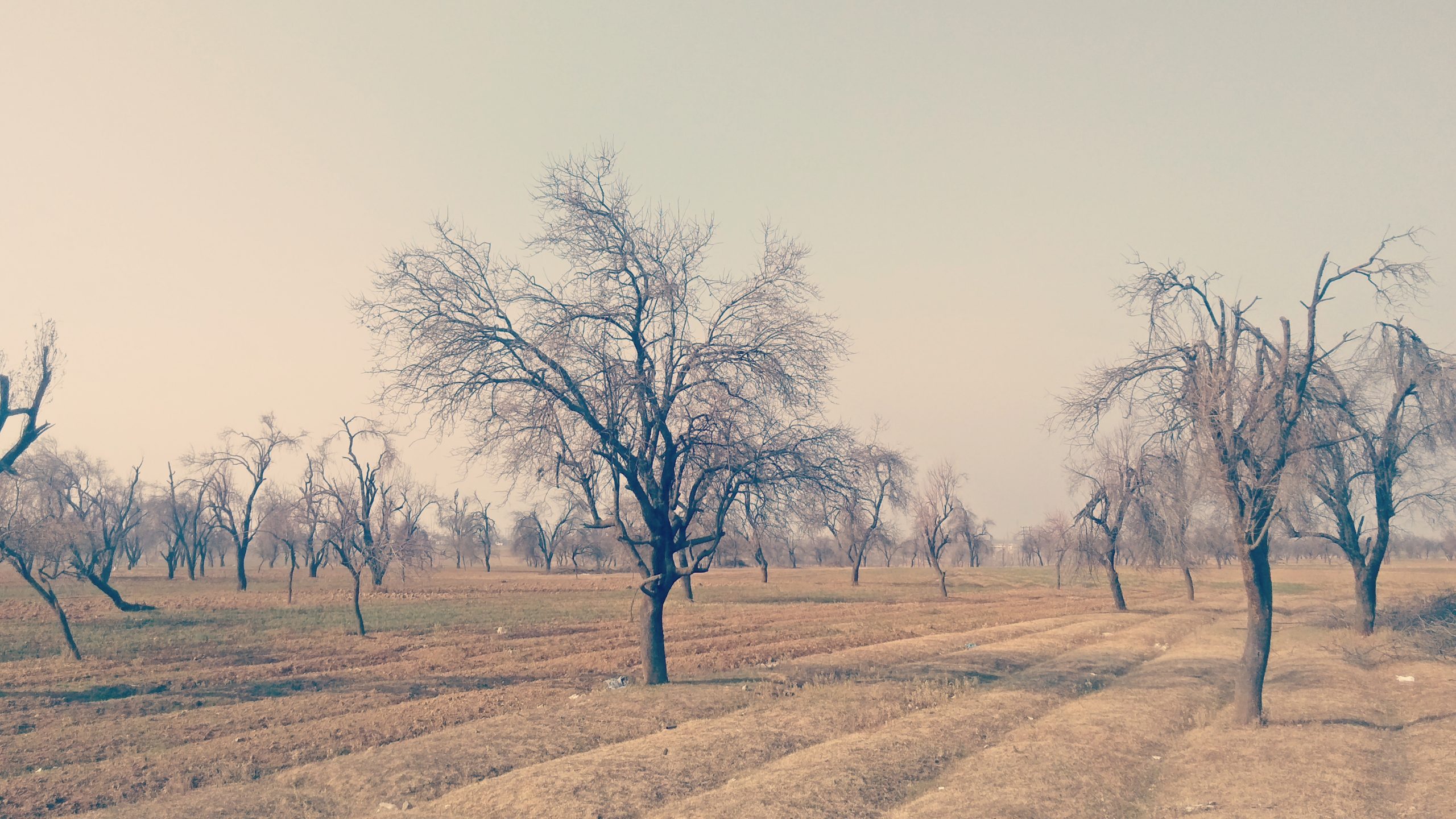Fading Flavour: As saffron production declines in Kashmir, farmers switch to apple, almond, walnut and vegetables
Saffron production in Kashmir region has declined by 65 per cent in the last two decades and lack of irrigation and climate change impacts are forcing farmers to adopt other crops or sell their farmlands for construction purposes.


Saffron flowers bloom in November at Pampore before farmers pluck them during the harvesting season. Photo: Mudassir Kuloo
Srinagar, Jammu and Kashmir
Bashir Ahmad, a 55-year-old farmer from Pampore in South Kashmir’s Pulwama district, 15 kilometres from Srinagar, remembers the time when he cultivated saffron on eight kanals (0.4 hectares) of land two decades ago. His family would annually earn between Rs 1.8 lakh and Rs 2 lakh from two kilogrammes (kg) of saffron. Pampore is known as the ‘saffron town’ as the best quality is grown there.
But, eight years ago, Ahmad switched from cultivating saffron to growing other crops, and planted saplings of apple and almond. He also started growing potato, onion and green peas. “My four kanals [0.2 hectares] under apple started fruiting two years ago,” he told Gaon Connection. Last year, he sold apples for Rs 80,000. This year, they fetched him Rs 1,30,000. “My apple trees are giving me better returns than saffron,” he said. From almonds, potato, onion and green peas, he earns up to an additional Rs 1.5 lakh annually.
Dwindling production and low prices were the main reasons why Ahmad made the switch from saffron. “At present, Kashmiri apples have a better market,” he said. High-grade Kashmiri saffron has been hit by adulteration — it is mixed with the less expensive Iranian variety. “It is difficult for a regular buyer to identify real Kashmiri saffron, and so its value has come down,” explained Ahmad.

There were 22,000 families in the Kashmir region cultivating saffron a decade ago, but the numbers have dwindled to about 16,000 families. Saffron generates a revenue of around Rs 300 crore annually. While some farmers earn over Rs 8 lakh annually, those with smaller land holding earn less than Rs 2 lakh.
As per the official figures of the Department of Agriculture, the area under saffron cultivation in Kashmir has shrunk by 43.9 per cent from around 5,707 hectares in 1996 to 3,200 hectares now. The production of Kashmiri saffron has declined by 65 per cent over the past two decades, from 16 metric tonnes a year to 5.6 metric tonnes.
In Kashmir, saffron is raised in three districts — Pulwama, Budgam and Srinagar.
The soil in Pampore is highly suitable for saffron cultivation. However, with continuous low yields proving a deterrent, hundreds of saffron farmers such as Ahmad have started cultivating other crops to get better returns. Many farmers have planted saplings of apple, almonds and walnuts and are expecting better returns than what they got from saffron.
An official of the agriculture department in Kashmir admitted that land under saffron has shrunk over the years due to construction and farmers’ switching to other crops. “But we don’t have figures on how much land encroachments have come up over the years in Kashmir especially in Pampore,” the official, who did not want to be named, added.
In his recent radio programme Mann Ki Baat on December 27, Prime Minister Narendra Modi mentioned Kashmiri saffron. “The next time you decide to buy saffron, think of buying the saffron of Kashmir. The warmth of Kashmiri people is such that it imparts a unique, distinct flavour to the saffron,” he had said.
Sensitive to weather conditions
However, the cultivation of saffron continues to decrease and other produce is taking its place. Vagaries of weather, lack of irrigation facilities and construction activities are also responsible for its decline. And saffron cultivators are finding other produce such as apples and walnuts a lot more profitable.
Mohammad Sultan, who is in his late fifties, has also planted apple and walnut saplings and vegetables on his six kanals (0.3 hectares) in Pampore. “Fifteen years ago, we would harvest two kilogrammes of saffron a year. That reduced to eight hundred grams. And so, six or seven years ago, we started raising other crops, including apples, on our land. At least, they are more remunerative than saffron,” Sultan told Gaon Connection.

The saffron fields, covered in vivid violet blossoms with vibrant crimson styles are also being sold off by the cultivators as real estate. “Over the years, residential colonies have come up on the once-pristine saffron fields,” Sultan added.
While residences have come up in some places, Abdul Majeed Wani, president of the Saffron Growers Association and a native of Pampore, told Gaon Connection that “strict restrictions have been in place for some years now to stop conversion of land under saffron”.
GI Tag and a national mission
Saffron is derived from the crimson stigma and styles of the Crocus sativus flower. And, Kashmiri saffron is considered the best in the world due to its flavour, colour and aroma. Three to four kanals of saffron fields yield one kg of fine saffron. Each kilogramme costs between Rs 1.6 lakh and Rs 2.2 lakh, depending on the quality and demand.

In May this year, Kashmiri saffron was given the Geographical Indication (GI) tag. It is now illegal for someone outside the valley to sell a similar product under the ‘Kashmiri saffron’ label. GI tags are “indications which identify a product as originating in that territory, where a given quality, reputation or characteristic of the product is essentially attributable to its geographic origin.”
The Union ministry of agriculture launched the ‘National Mission on Saffron’ in 2010 with a project cost of Rs 400.11 crore, but it is yet to be completed. This project was meant to improve productivity, provide better irrigation facilities, and update farming and post-harvesting practices.
After Kashmiri saffron received the GI tag, a lab has been set up in Pampore to check the quality of saffron being exported. This season, the price of a kilogramme of saffron has gone up from Rs 1.3 lakh to Rs 1.8 lakh, Wani said. “The GI tag has really helped us, but production remained low this year,” he added.

Erratic rainfall and climate change
Climate change has also contributed to the decline in saffron cultivation. A decade ago, Kashmir would receive adequate rainfall in September and October but that has changed now — the valley received inadequate rainfall during those two months and Wani attributed the decline in saffron production to the dry weather in these months.
This year, over four metric tonnes of saffron was produced from October to November, informed Wani. About 15 years ago, saffron production in the same period used to be 16 metric tonnes. Lack of irrigation facilities also affected the production, as saffron needs to be irrigated five times in the months of September and October, he explained. Planting of saffron is done in July and August, and harvesting begins from the last week of October.
This is also why farmers are eagerly waiting for the completion of the sprinkle irrigation facility, which is part of the ‘National Mission on Saffron’. However, Manzoor Ahmad Qadri, director of agriculture department, Kashmir, said a large part of irrigation work has been completed in Pampore.

Wani said that with the sprinkle irrigation facility, farmers will be able to get a more bountiful crop, 15 days before the usual time. However, Qadri said official details of this year’s harvest are still being gathered.
Recently, authentic GI-tagged Kashmiri saffron was made available in the United Arab Emirates. It was launched by Navin Kumar Choudhary, principal secretary (Agriculture) Jammu and Kashmir, and Aman Puri, India’s consul general to Dubai, at Al Maya Group, one of the biggest retail chains of the UAE.
Apart from climate change-impact, another important factor contributing to the decline in production was damage to the corms (bulbo-tubers that store water for the plants) during weeding, explained Bashir Ahmad Illahi, professor at Sher-e-Kashmir University of Agricultural Sciences and Technology of Kashmir. “Saffron farmers are dependent on labour from Bihar, Uttar Pradesh and West Bengal to plough or remove weeds. They are unaware of the sensitive nature of saffron,” he said. Their inexperience often causes injuries to corms, damaging the plant, and resulting in decline in production. Also, the number of corms per hectare has halved from 500,000 to 2,25,000, Illahi explained.
“After every four years, farmers should change the corms, but in Kashmir they change them after 20-30 years. This leads to poor saffron production,” Illahi said.
However, Illahi did not think switching crops was the ideal solution. “Apple trees require adequate irrigation too. There is not much water available in Pampore. Initially, the water requirement for apples may be less, but it increases later. So, don’t switch crops but follow what the experts say to increase production of saffron,” he advised.
He also hoped that GI tagging and its associated returns will get farmers to move back to saffron cultivation. Qadri said the GI tag would help farmers to get better returns. “Everything is being regulated to stop low-quality Iranian saffron from being sold as Kashmiri saffron,” he added.
Mudassir Kuloo is a Srinagar-based journalist.

